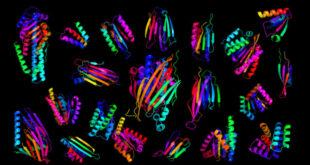According to new research, levels of high-density lipoprotein (HDL), non-HDL and total cholesterol in U.S. youths have improved from 1999 to 2016, but only 50% of children and adolescents are in the ideal range, and 25% are in the clinically high range.
Between 1999 and 2016, favorable trends were observed in cholesterol levels in U.S. youths aged 6 to 19 years. Image credit: Adrian Malec.
“High cholesterol in childhood is one of the key risk factors for developing heart disease later in life,” said lead author Dr. Amanda Marma Perak, from Ann and Robert H. Lurie Children’s Hospital of Chicago and the Northwestern University Feinberg School of Medicine.
“Although we see favorable trends in all measures of cholesterol in children and adolescents over the years, we still need to work harder to ensure that many more kids have healthy cholesterol levels.”
“We know that high cholesterol is the critical initiator of atherosclerotic plaques in the arteries, and even in childhood it is associated with these changes in the blood vessels that can lead to heart attack in adulthood.”
For children and adolescents, ideal measures include total cholesterol at less than 170 mg/dL, non-HDL (‘bad’) cholesterol at less than 110 mg/dL and HDL (‘good’) cholesterol at greater than 45 mg/dL. These levels are associated with better long-term health.
All youth should have their cholesterol checked at ages 9 to 11 years and again at 17 to 21 years, according to the latest guidelines from the National Heart, Lung and Blood Institute.
“If a child is found to have borderline-high or high levels of cholesterol, we can usually improve those levels through lifestyle changes, such as healthier diet and increased physical activity,” Dr. Perak said.
“Children are rarely placed on cholesterol-lowering medications like statins.”
Dr. Perak and colleagues analyzed U.S. population-weighted data for youths aged 6 to 19 years from the National Health and Nutrition Examination Surveys for 1999 through 2016.
In total, 26,047 youths were included (weighted mean age – 12.4 years; female – 51%).
The improving cholesterol trends observed in the study are surprising given that obesity is one of the factors that drives abnormal cholesterol levels and childhood obesity continues to increase.
“More research is needed to understand the reasons for the favorable cholesterol trends we found,” Dr. Perak said.
“Some factors that influence cholesterol may be improving, such as decreased trans fats in the food supply.”
“Although more efforts are needed, the fact that cholesterol levels are moving in the right direction warrants some optimism about the future cardiovascular health of our population since cholesterol is such an important driver of cardiovascular disease.”
The results were published in the journal JAMA.
_____
Amanda M. Perak et al. 2019. Trends in Levels of Lipids and Apolipoprotein B in US Youths Aged 6 to 19 Years, 1999-2016. JAMA 321(19): 1895-1905; doi: 10.1001/jama.2019.4984
 #Bizwhiznetwork.com Innovation ΛI |Technology News
#Bizwhiznetwork.com Innovation ΛI |Technology News




